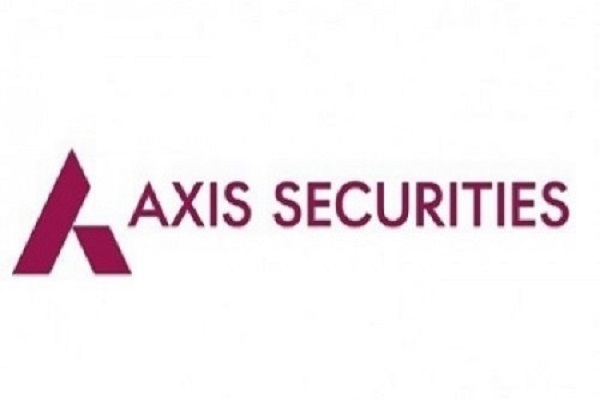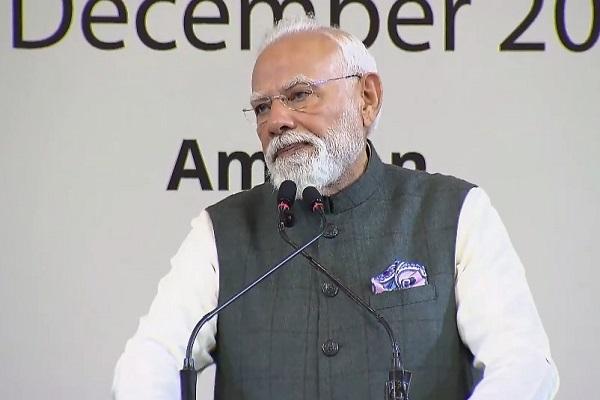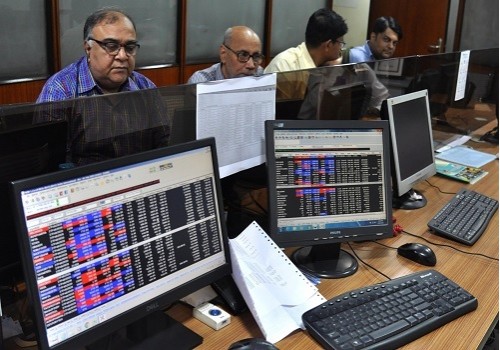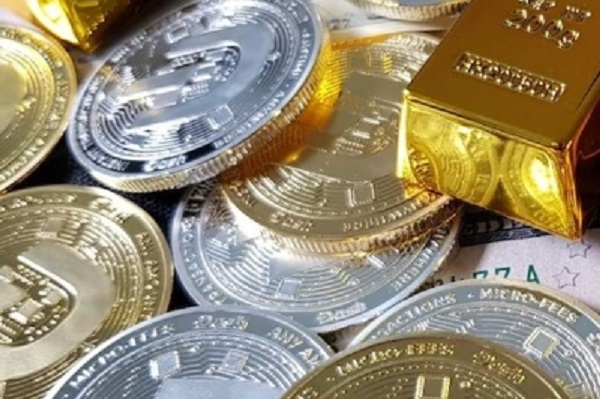Quote on Perspective by Ms. Riya Singh - Research Analyst, Commodities and Currency , Emkay Global Financial Services

Below the Quote on Perspective by Ms. Riya Singh - Research Analyst, Commodities and Currency , Emkay Global Financial Services
“US Dollar – The US dollar is currently facing bit of a softening phase. After rallying briefly on the back of a de-escalation in US-China trade tensions, the greenback has reversed gains rapidly, pressured by a slew of weaker-than-expected macroeconomic indicators. The April core Consumer Price Index (CPI) rose by just 0.2% month-on-month, below consensus—fuelling expectations that inflation is no longer a major policy constraint for the Federal Reserve. At the same time, US retail sales came in flat for April, and the ISM Services Index slumped to 49.8, marking its lowest level since early 2023, signalling a cooling economy. Moody's cut the United States' top sovereign credit rating by one notch on Friday, the last of the major ratings agencies to downgrade the country, citing concerns about its growing $36 trillion debt pile and the trade friction impact on the economy. Trump cleared a hurdle towards passing a sweeping tax cut bill that would add an estimated $3 trillion to $5 trillion to the nation's debt over the next decade, after winning approval from a key congressional committee. This could further the pressure. Expect 50 bps rate cut from Fed for the year as inflation and economic numbers soften for US. Indian Rupee - The Indian Rupee has appreciated by nearly 2%–3% in recent months, albeit amid heightened volatility driven by movements in the U.S. Dollar Index (DXY) and geopolitical tensions surrounding the India–Pakistan conflict. The rally in the Rupee was somewhat capped by the rise in global crude oil prices, which continue to weigh on India’s import bill. Following the initial optimism after the India–Pakistan ceasefire, the Rupee has pared some of its gains, with concerns over India's external sector resurfacing. In April, the trade deficit widened to $22.8 billion as exports declined by 6.5% year-on-year, while imports remained robust, supported by strong domestic demand. This imbalance has put further pressure on the current account. Additionally, the U.S. dollar has weakened slightly in response to Moody’s downgrade of U.S. sovereign credit outlook, offering some tailwind to the Rupee. Going forward, USD/INR is expected to remain range-bound between 84.45 and 86.45. Any sharp depreciation in the Rupee is likely to be curbed by timely intervention from the Reserve Bank of India through forex market operations. Crude Oil - The global oil market remains under pressure as supply is poised to outpace demand over the near to medium term, with IEA projecting global supply growth of 1.6 million bpd in 2025 and 970,000 bpd in 2026, against slower demand growth of 740,000 bpd and 760,000 bpd, respectively. This widening surplus—estimated at around 730,000 bpd for 2025—comes as OPEC+ accelerates its output hike by 960,000 bpd between April and June, reversing previous cuts, while a potential nuclear deal with Iran could unleash an additional 400,000 bpd. Simultaneously, OECD crude stocks remain only modestly below the five-year average, signaling limited supply tightness. On the demand side, the IEA expects growth to decelerate from 990,000 bpd in Q1 to 650,000 bpd for the remainder of 2024 due to economic headwinds and rising EV adoption. Meanwhile, geopolitical developments—such as easing US-China tariffs and China’s opportunistic crude stockpiling from Iran and Russia—offer some support, though recent U.S. tariff hikes and slowing trade volumes are expected to dampen demand, especially in Asia. With capital expenditure outside OPEC+ set to fall by 5% in 2025, and uncertainty over long-term trade policy lingering, oil prices are likely to remain capped in the near term despite short-term volatility, as robust supply growth meets fragile demand recovery. Gold - Gold prices, after soaring to record highs of over \$3,500/oz in April 2025, have recently entered a phase of correction, losing over 3% in a single week following the temporary de-escalation of U.S.-China trade tensions. Despite this pullback, gold remains up more than 20% year-to-date. In Q1 2025, total global gold demand reached 1,206 tonnes—a 1% increase year-on-year—even in the face of elevated prices. Investment demand was the standout driver, more than doubling to 552 tonnes (+170% y/y), primarily due to renewed interest in gold-backed ETFs, which saw inflows of 226 tonnes in the quarter. These flows were fueled by tariff uncertainty, recession fears, and shifting monetary policy expectations. Central banks, though easing their pace of accumulation, remained net buyers for the 16th consecutive year, adding 244 tonnes in Q1, down 21% y/y but in line with recent quarterly averages. Notably, China continued to add to its gold reserves for a sixth straight month, albeit at a slower pace—just 2.2 tonnes in April. Meanwhile, bar and coin demand rose 3% y/y to 325 tonnes, with strong retail buying in China offsetting weakness in the U.S. market. Jewellery demand fell to its lowest volume since the pandemic, though overall spending value rose 9% y/y to \$35 billion, reflecting resilience in demand despite price pressures. The recent correction is largely attributed to improved risk sentiment following the 90-day U.S.-China tariff truce and reduced urgency for haven assets. However, underlying structural demand remains intact. Gold to witness consolidation within the range of $3285 - $3130 Silver – Silver has also corrected on reduced safe-haven demand, as U.S.-China trade tensions eased following a mutual agreement to lower tariffs substantially (from 145% to 30% by the U.S. and from 125% to 10% by China). China's official April manufacturing PMI fell into contraction at 49.0 whereas industrial numbers which has come at 6.1% could provide some support. Consolidation within range of 34.86 – 31.50 Base metal - Copper prices have shown resilience, rising around 1% in early-week trading following the announcement of a 90-day de-escalation in U.S.-China trade tensions. China’s continues to demonstrate strong demand for copper with April witnessing copper ore and concentrate imports of 2.92 million tons, taking the 12-month tally to 28.8 million tons. This however, could have been out of fear of tariffs. The near-term headwinds persist. China's official April manufacturing PMI fell into contraction at 49.0, its lowest since late 2023, with export orders plunging to 44.7—reflecting early signs of tariff-induced strain. However, prices should be supportive as the ore markets continue to become thin. Pound British Pound (GBP): The Pound Sterling has traded within a 150-pip range against the U.S. Dollar, showing resilience amid mixed macro signals and global developments. After dipping to a one-month low of 1.3140 post the U.S.–China tariff truce, GBP/USD rebounded above 1.3300 as softer U.S. CPI data revived expectations of a dovish Fed. The pair’s bounce also drew support from upbeat UK GDP data, which showed 0.7% quarterly growth in Q1 2025, surpassing expectations. While UK employment data was mixed, hawkish BoE commentary helped limit losses. Still, GBP/USD faced resistance near 1.3360 amid stronger U.S. inflation expectations and geopolitical optimism. With UK CPI, PMI, and Retail Sales data due, plus further Fed speak, the coming week could drive renewed volatility. Overall, the pound remains supported, but direction hinges on inflation trends and central bank guidance. Euro (EUR): The euro has started the week on a quiet note, holding near the 1.12 mark as markets remain cautious following last week's dollar rebound driven by the U.S.–China tariff truce. The single currency had come under pressure as optimism over the interim trade agreement lifted risk appetite and supported the U.S. dollar. However, uncertainty around the durability of that deal and soft U.S. consumer sentiment data (University of Michigan index falling to 50.8) tempered dollar gains. Despite 10-year U.S. yields remaining elevated above 4.50%, the dollar’s momentum has stalled, reflecting market confusion over inconsistent data and Fed rate path expectations. Meanwhile, eurozone fundamentals remain mixed; recent Q1 GDP was revised slightly lower to 0.3%, yet March industrial production beat forecasts. With no clear catalyst for a breakout, EUR/USD is expected to remain range-bound between 1.11 and 1.16 in the near term, with bias tilting modestly in favor of the dollar unless U.S. data deteriorates or the ECB signals a shift in tone.”
Above views are of the author and not of the website kindly read disclaimer










More News

Quote on Morning market Views 3rd November 2025 by Dr. VK Vijayakumar, Chief Investment Stra...








